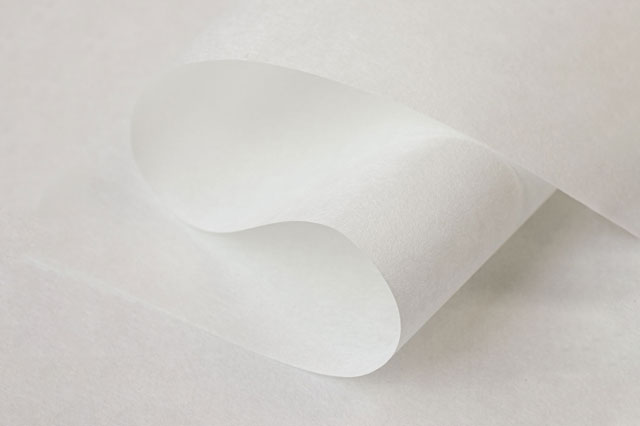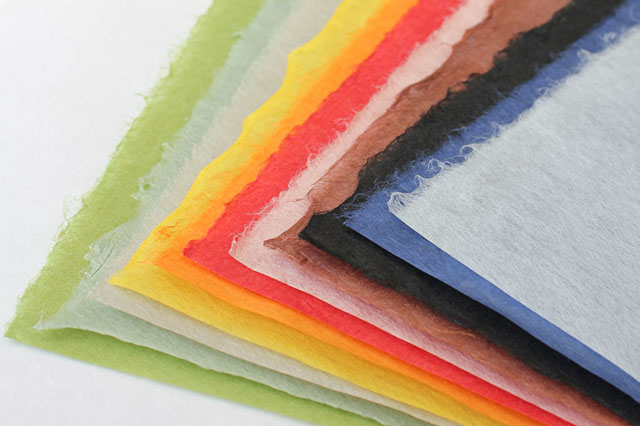Washi and Printmaking
2024 Apr 11th
Washi loves ink. That is the first thing you need to know when asked about selecting Japanese paper for printmaking. Printmakers often have very specific demands of the paper they are using and are accustomed to preparing their chosen stock to meet their needs. Knowing some key characteristics of the papers will help you direct their selection, but, handled properly, you can use almost any washi for each kind of printmaking. For intaglio and engraving, gampi’s sheen and ultra-smooth surface receives even the finest detail. Gampi-fibre paper and kozo-fibre tissues are considered go-to choices for chine collé but can also be used as the main stock for printmaking unsupported by other stock. When printing relief work, the choice of washi is wide open – it is hard to make a bad choice – even paper with inclusions can be used to excellent effect for a bold image.
Preparing the Paper
Dampening the paper is common practice when using heavy western-style papers. We encourage a “test dry paper first” approach. Washi, with its supple and absorbent nature, receives the ink. After a test, if the results are not satisfactory, the paper can be placed in a “damp pack”. A damp pack is simply a plastic bag in which the dry printmaking paper is layered with dampened newsprint. The moisture that migrates from the newsprint to the washi is enough.

Damp pack with newsprint
Considerations
Handmade paper has the beauty of four deckle edges and is available in different formats and sizes. When discussing paper options with printmakers, encourage the artists to consider the size of the paper they want to use before developing their image size in order to get the best yield from the sheet. There is, also, little worse for the printmaker than discovering the plate they’ve worked so hard to create is too large for their chosen paper.

A selection of small format washi
Most Japanese papers are unsized and, as a result, are generally more absorbent. Sized sheets are also available and may be sought by artists, especially for printing Mokuhanga (Japanese-style woodcut).
Washi Options
When selecting paper to offer your printmaking customers, it is good to be able to offer choices of varying value and fibre content. For students, and those looking for more affordable options, papers made from a kozo/wood pulp blend, either by machine and or by hand provide the perfect entry into using Japanese paper. Kozuke and Hosokawa Student are two examples. Machine-made, pure-fibre papers, like Usu Kuchi Heavy, Gampi Smooth, and Classic Kitakata offer a slightly higher quality at a similar price point.

Kozuke White
Hand-made, pure-fibre papers, made from 100% kozo and gampi, take your artists to the next level of quality. Choices to offer include Uwa Senka (sized and unsized) and Gampi Itaboshi (28g, 35g, 42.5g).
For those who truly want to elevate their work, nothing compares to Heritage Washi. Kurotani #11 HW, Sekishu Kozogami HW, Mitsumata Tissue Heavy HW, Bicchu Torinoko Gampi Chiri HW, and Sekishu Torinoko Gampi HW represent paper made from each fibre grouping – all exquisite!

Mitsumata Tissue Heavy
There is a long list of washi suitable for chine collé: consider Kizuki Somegami (in a range of colours) for a kozo-fibre option available exclusively from The Japanese Paper Place; Mitsumata Tissue Light HW for its elegance and delicate tone, Gampi Tissue Light Green or Gampi Tissue White for their subtle sheen and translucency.

Kizuki Somegami
When it comes to match-making washi and ink, it is hard to go wrong. For more details about choosing washi for printmaking, watch the Print Day in May 2021 video, or ask your representative.

